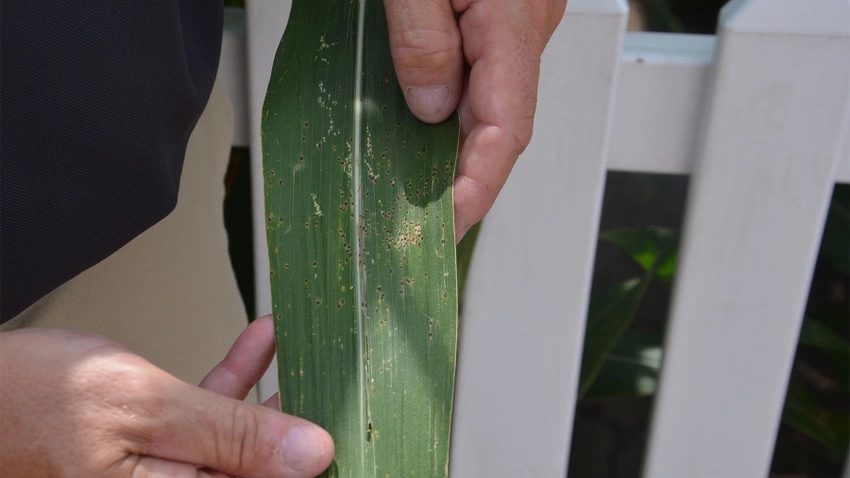Tillage not answer to reducing tar spot risk

Tar spot was here this year. Should we till fields to turn infected residue under? We’ve been leaving some stalks for no-till beans and running a vertical tillage tool. Will running a VT tool control tar spot?
The Indiana certified crop advisers panel answering this question includes Steve Gauck, regional agronomy manager for Beck’s, Greensburg; Bryan Overstreet, Conservation Cropping Systems Initiative agronomist, Valparaiso; Dan Quinn, Purdue Extension corn specialist; and Dan Ritter, central region agronomist, Dairyland Seed.
Gauck: Tar spot can survive in corn residue. To get control, you would need to bury all residue and have all your neighbors do the same. Running VT in the fall will help break down stalks, but it will not influence tar spot levels. Tar spot infections are dependent on weather throughout the growing season. You will be more profitable and maximize yields using your normal practices. Then manage and scout for tar spot next season.
Overstreet: It is true that tar spot can live on corn residue through winter. Tillage of infested residue can reduce spore movement, but tillage alone has given inconsistent results of control. Rotating to soybeans for a year and doing some light tillage with a VT tool to help break down residue would be more beneficial.
Some farmers have also used a low rate of 28% nitrogen, or a mix of different biologicals, sprayed on stalks to feed the biology and speed up breakdown of residue. The biggest key is breaking down residue. With good soil health, residue may break down more quickly, along with tar spot spores.
Darcy Telenko and Dan Quinn at Purdue are also looking at planting shorter-maturity hybrids early as an alternative. The goal is to have the crop mature ahead of disease development so yields are not hurt so much. You also may check with your seed dealer on which hybrids are most tolerant.
Quinn: Unfortunately, most tar spot research hasn’t found additional benefit in tar spot control from tillage. Therefore, more aggressive tillage or the use of a VT tool likely won’t provide any additional benefit. Once tar spot is found, it tends to persist in those fields moving forward. Better control of tar spot will come from hybrid selection, crop scouting and proper fungicide timing when needed.
Ritter: Tar spot is still a relatively new disease in the U.S., and as such, we still have much to learn. To give you an agronomist recommendation on your next steps, I would say, “It depends.”
At this time, information indicates that tillage may have limited advantages in controlling the disease. Spores can be windblown and drift from neighboring fields. If everyone plowed in fall for miles around, perhaps that would help. I’m not sure that will happen. Then, given the polycyclic nature of this pathogen, it can still quickly infest a field, given ideal conditions. So, aggressive tillage could reduce spore numbers in your field, but won’t eliminate the possibility of tar spot. Vertical tillage would be even less effective. It tends to chop and size residue rather than bury it.

